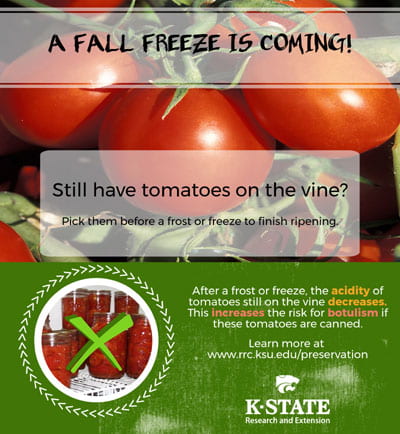Tomato plants may still produce fresh tomatoes into the Fall season. But, if the tomato vine is dead or killed by a frost or freeze, those tomatoes are not safe for canning. The pH, or acidity, changes in this situation to increase the pH above 4.6. Therefore, the safest choice to preserve these affected tomatoes is by freezing or dehydrating.
Unripe, or green, tomatoes can be preserved just like ripe tomatoes. So when canning them they still require acidification. Here are some ideas to can green tomatoes.
- Pickled Green Tomato Relish
- Pickled Sweet Green Tomatoes
- Piccalilli
- Fall Garden Relish
- Rummage Relish
- Oscar Relish
- Green Tomato Pie Filling
- Tomatillo Green Salsa—may use green tomatoes instead of tomatillos
- Spiced Green Tomatoes

Learn more about pre-frost tomato harvest at https://www.johnson.k-state.edu/programs/lawn-garden/agent-articles-faqs-and-resources/agent-articles/vegetables/Pre-Frost-Harvest.html.




